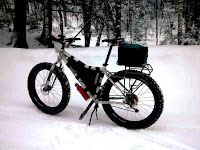
I am reading a very interesting, well-written novel based on
a true story, “Full Circle” by April Conrad. I bought it at the Great Waters
Fly Fishing Expo this past spring, and yet, I am only partway through it. Not
because of its length or disinterest, but because parts of it are really difficult
for me. You see, Full Circle is about a fly fisherman who has Stage 4 non-Hodgkin’s
lymphoma… for the second time. Six years ago this month, my wife Ellen was
diagnosed with non-Hodgkin’s lymphoma. We were very fortunate because it was
caught early. But from that moment where she got off the phone with her doctor,
came down the hall, and told her brother (who was visiting us at the time, and had
lost his wife to breast cancer) and I, “Well, I have cancer,” everything in our
world changed, just as it did for Dean, the main character in Full Circle.
Cancer is insidious. There probably isn’t an adult in this
country whose life hasn’t been affected by cancer in some way, shape, or form.
Ellen’s mother died of lymphoma. Her oldest brother went through chemo and
radiation for lymphoma two times. That was the reality that was staring us in
the face when we met the oncologist for the first time. But as I said, we were
fortunate, blessed. Everyone in our church was praying for her. Our best
friends, elders in our former church, and their son-in-law pastor, were praying
for us. In a chance encounter at a public event in Duluth, we ran into some old
friends from the first church we belonged to in Minnesota who were stalwart and
faithful prayer warriors, and right there in Canal Park, they prayed for Ellen.
I don’t care what you believe or don’t believe. I know what I believe, and I
know what Ellen believes. Prayer works. Six months after beginning
chemotherapy, Ellen was declared in remission. Now, five and a half years after
that, she remains cancer free.

Several years ago, when the National Trout Center was still
in operation in Preston, Minnesota, they offered an “Intro to Fly Fishing” class.
Ellen and our oldest daughter had taken part in a “How to Cast” session at
Great Waters earlier in the year. She had been commenting on how she thought
flyfishing might be an effective way to put chemo and cancer behind her, so we
traveled down to Preston, and in the course of an afternoon Ellen was “hooked.”
She used my first fly rod, which I received as a gift when I graduated from high
school, that weekend. Shortly after that, we went to Cabela’s and I got her a
fly rod and reel of her own. The following Mother’s Day added waders, wading
boots, a net, and a fishing vest. Yet, although she confessed to enjoying the stress-reducing relaxation that flyfishing produced, she considered herself more of a
photographer than an angler. However, that may have changed at least a bit on
Father’s Day weekend of this year. For a Father’s Day present, knowing that I
would be undergoing reconstructive foot surgery in July, Ellen arranged for a
guided fishing trip with Carl Hansel of
Namebini Guide Service on the Bois
Brule River in northwest Wisconsin. She caught trout, I caught trout, we fished
from a canoe (and renewed our love of canoeing that had been dormant since we
moved to Minnesota). We ran rapids in the dark and had a thoroughly enjoyable
time. It was so good that we have already rented a cabin and started making
arrangements for another trip, this time in the Minnesota Arrowhead for next
spring.

I think that either flyfishing has moved up, or photography
has moved down a bit in Ellen’s priorities. So much so, that on the last
weekend before my surgery, we took a “pre-surgery, self-isolation fishing trip”
to Carlton County where Ellen grew up, and I don’t think she ever took her
camera out of its case. What pictures we took, we took with our phones. We
fished the Moose Horn River that Ellen used to wade in as a child and Bob Lake
where she learned to swim. We caught some fish, not a lot, but we each got a
few. More importantly, it was a wonderful time we got to spend together as
husband and wife, as anglers, as best friends, and realizing what a blessing of
God that we have been given in being together, just like Dean and his wife in “Full
Circle.”


























